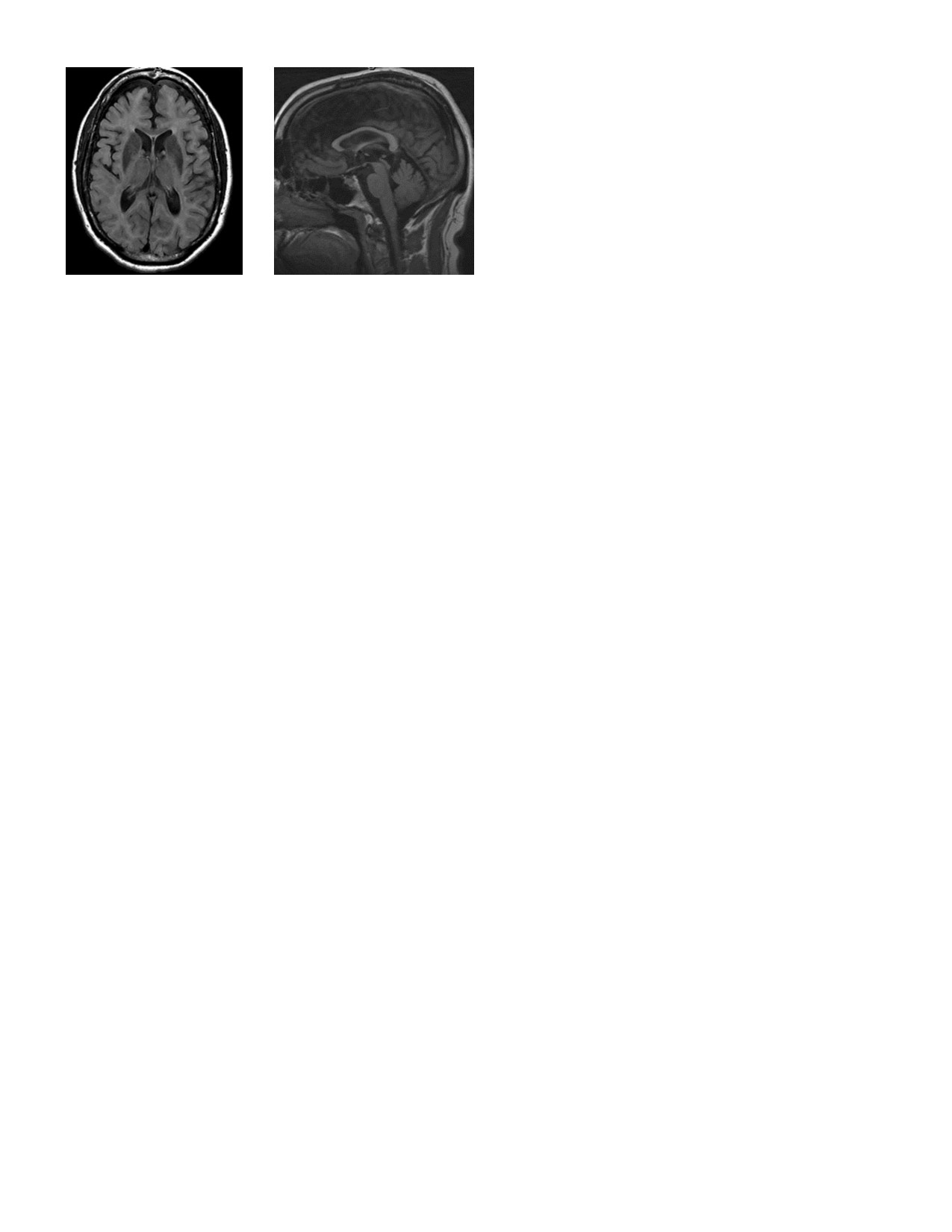Session Information
Date: Monday, September 23, 2019
Session Title: Ataxia
Session Time: 1:45pm-3:15pm
Location: Les Muses, Level 3
Objective: To report an atypical case of Cockayne Syndrome manifesting as pure adult onset cerebellar ataxia.
Background: Cockayne Syndrome (CS) is a rare autosomal recessive neurodegenerative disease caused by mutations in either ERCC8 or ERCC6 genes, with key manifestations of growth failure, microcephaly, learning disability, retinal degeneration, sensorineural hearing loss & photosensitivity [1]. Age of onset and severity of the disease define three different CS subtypes. Type 1 (classic) has moderate symptoms and is diagnosed in childhood. Type 2 is severe and early in onset. Type 3 is mild and typically diagnosed in adolescence/early adulthood.
Method: Case Report. A 51 year old male, referred for gait abnormality, had presented to his primary care physician at age 49 for “dizziness” when looking up. He denied any gait or balance difficulties except tendency to walk near walls; however, his spouse had noticed clumsy gait since his 20s. Throughout school, he played sports. . He attributed his speech to regional patterns. He denied learning problems, graduated from college and teaches special education. Family history was negative for learning disability or ataxia. He denied photosensitivity. Exam was significant for hypermetric saccades and slight dysarthria with SARA score of 8.5. Sensory exam and reflexes were normal. Head circumference is >97%, weight 93kg and height of 175cm. MoCA was 25/30. Subsequent cardiac, endocrine and ophthalmological tests were normal. Brain MRI demonstrated diffuse hypomyelination with mild cerebral and cerebellar atrophy [Figure 1].
Results: Next generation sequencing of 190 genes associated with leukodystrophy revealed 2 mutations in the ERCC6 gene: c.2167C>T pGlyn723X is a known pathogenic mutation and c.1820A>T p.Lys607Met was reported as a VUS. Parental testing confirmed inheritance of one mutation from each parent.
Conclusion: Prior cases of CS Type 3 had various combinations of dwarfism, cachexia, microcephaly, hearing loss, photosensitivity, or ataxia with reduced lifespan. Others have described photosensitivity, similar to XP, as the sole clinical manifestation [2]. This patient is a unique presentation with late onset, slowly progressive pure cerebellar ataxia, thus expanding the phenotypic spectrum of CS.
References: 1. Calmels et al. Functional and clinical relevance of novel mutations in a large cohort of patients with Cockayne Syndrome. J Med Genet, 2018 May; 55(5):329-343. 2. Laugel, Vincent. Cockayne syndrome: the expanding clinical and mutational spectrum. Mech Ageing Dev, 2013 May-June; 134(5-6): 161-70.
To cite this abstract in AMA style:
R. Chuang. Cockayne Syndrome manifesting as late adult onset cerebellar ataxia: expanding the phenotype [abstract]. Mov Disord. 2019; 34 (suppl 2). https://www.mdsabstracts.org/abstract/cockayne-syndrome-manifesting-as-late-adult-onset-cerebellar-ataxia-expanding-the-phenotype/. Accessed July 1, 2025.« Back to 2019 International Congress
MDS Abstracts - https://www.mdsabstracts.org/abstract/cockayne-syndrome-manifesting-as-late-adult-onset-cerebellar-ataxia-expanding-the-phenotype/

